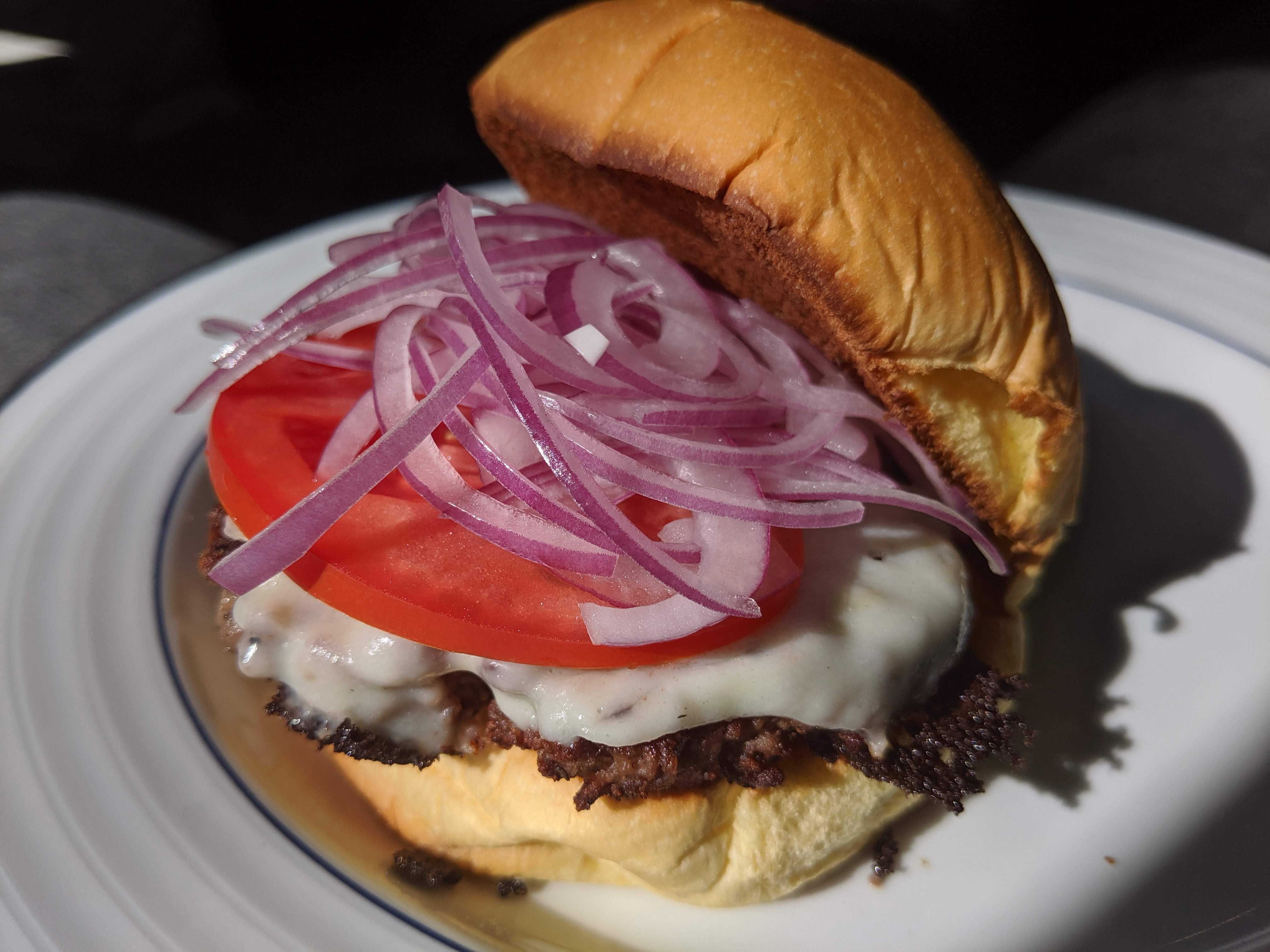- Starting this month, Impossible Foods is finally offering its veggie-based version of ground beef in supermarkets.
- Impossible already has burgers at Burger King (the Impossible Whopper) and White Castle, as well as a variety of smaller restaurants. This is the first time people can buy the ingredients directly and make their own Impossible meals.
- On Wednesday, I made Impossible Burgers for lunch and dinner – four in total between myself and my partner.
- The experience was familiar, of course, but distinctly different from what I’m used to with ground beef.
- Visit Business Insider’s homepage for more stories.
Burgers, as we all know, are delicious – a near-perfect combination of fatty, salty meat with creamy cheese and fresh vegetables, all wrapped in a soft, crusty bun.
In my mind, the ideal burger is something along the lines of what you’d find at Shake Shack or In-N-Out: a smashburger. Not the chain, but the concept: a relatively small, concise burger.
It’s that type of burger, or something like it, that I set out to make on Wednesday with the newly available Impossible Foods “meat.” The experience was both fascinating and familiar.
First and foremost, the raw version of the Impossible Burger looks an awful lot like highly processed ground beef.

Impossible’s “beef” looks very similar to actual ground meat – albeit highly processed ground meat, along the lines of Spam.
It has a kind of compacted feeling as well, no doubt because of the way it's sold: in a plastic pouch. It feels condensed because it has been condensed.
This is a notable difference from ground beef that often comes in long strands, directly from the grinder. The best burgers are made from relatively loose ground beef that hasn't been "overworked," which felt like a strike against Impossible's "meat" right out of the box.
(Spoiler: It turned out to not be a problem at all.)
Yes, you can eat Impossible's "meat" totally raw. Honestly, it tastes pretty good uncooked.
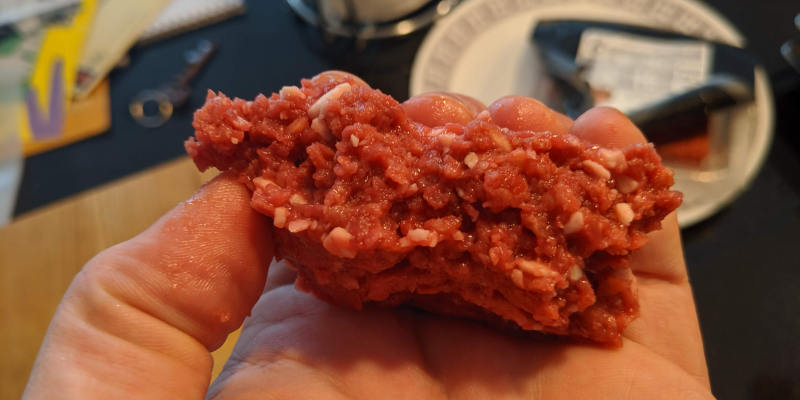
If you've ever eaten a terrine, or a Thai laab, or another type of chopped-meat dish, you'll be right at home eating Impossible's "meat" raw. It could certainly use some salt, but the product straight out of the packaging packs a surprisingly savory, umami-rich punch.
Also of note: It's got a lot of chew, distinctly different from the paste-like consistency of pâté.
To that end, Impossible Foods has test-served its "beef" as tartare - and that's unsurprising. With the right crowd, it would totally work.
But let's not kid ourselves: My goal was making burgers, not eating veggie tartare.
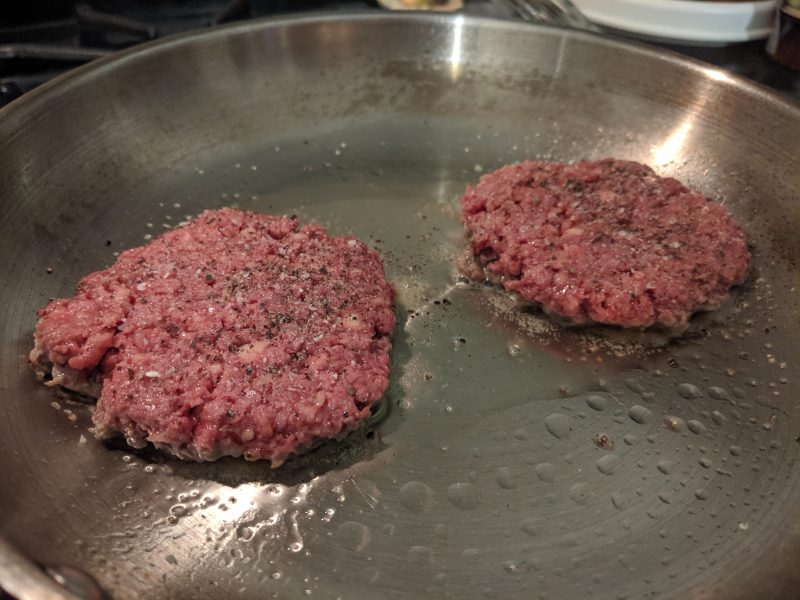
For each of the four burgers I made, I did the same thing I'd do when making a standard burger:
- Weigh out 3 ounces of veggie meat.
- Gently roll it into a ball, then gently form that into a thin patty.
- Generously season both sides with salt and pepper.
I used a standard stainless-steel pan set over the highest flame on my hottest burner, slicked with a teensy bit of vegetable oil to prevent sticking (a 1/2 teaspoon or less). After two to three minutes, I flipped the patties and topped the seared side with a slice of white American cheese.
Outside of toasting the bun and preparing vegetables, this was the process I repeated for each of the four burgers I made. It is exactly the same process I use for making beef burgers, and it produces consistently delicious burgers.
What was most amazing, right off the bat, was how directly this process applied to Impossible's veggie burgers.
The Impossible Burger cooks very much like a beef burger, which was shocking to me.
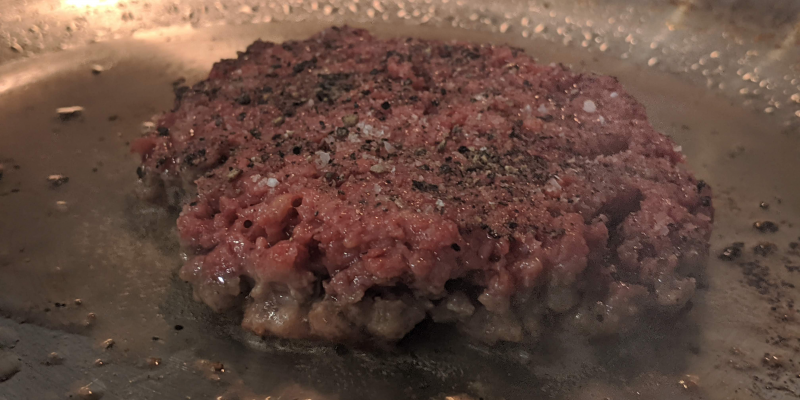
Anyone who's cooked lots of burgers knows how to tell when to flip: The edges of the patty facing down start to curl a little and change color, and a bit of liquid tends to pool on the top.
It's an age-old sign that it's time to flip the burger, which is then quickly topped with a slice of cheese that can melt as the second side sears.
Impressively, the Impossible Foods veggie version acts very similar. If anything, I found that it seared a bit faster than a standard beef burger.
Best of all, the Impossible Burger is incredibly friendly to eaters who like crispy edges on their burgers (like me). Part of what Shake Shack is so well known for is exactly this, and it's stunningly easy to re-create with Impossible's veggie patty.
Visually, the Impossible Burger is stunningly close to the real thing.

There are some pretty impressive visuals inside an Impossible Foods burger.
It's got crags and a seared, crispy exterior, where melted cheese can blend with the patty to form something new. It bleeds, as you can see above, into the bun below it, just as a beef burger would - remember, I used almost no oil in the pan, so any juices coming off the patty are from the burger itself. The edges look like a loose amalgamation of protein strands, just like on a ground-beef patty.
Honestly, you could very likely market and sell these burgers as beef burgers and most people wouldn't be able to tell the difference.
But anyone paying close attention would quickly realize the difference: Impossible's burger doesn't taste like beef. It's close! But it's not beef.
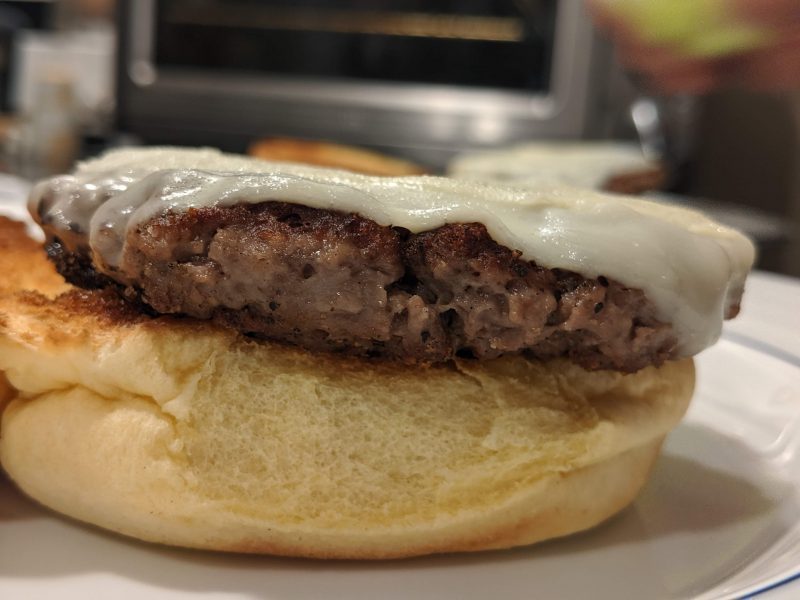
Do you know the word "unctuous"? It's kind of gross-sounding, so bear with me for a moment: It means "of the nature of or characteristic of an unguent or ointment; oily; greasy."
Some of the best meat dishes are so great because of their unctuousness. Your favorite roast, for instance, is made particularly delicious because of the slow rendering of its fat, which makes the roast more tender and more flavorful.
Simply put: Fat is a major component of what makes meat taste good.
And not just any fat - the type of fat and the type of animal it's connected to (to say nothing of what the animal ate or how it was raised) can make a huge difference in taste and complexity. That's all before we start talking about how a particular dish was cooked.
No matter how much coconut oil and sunflower oil Impossible adds to its fake beef, it cannot replicate naturally occurring animal fat in meat. It can come close! And it does come close with its ground-beef replacement. But it's missing a layer of complexity that beef has.
But just because it doesn't taste exactly like beef doesn't mean it's not delicious. Let me be clear: The Impossible Burgers I made were absolutely delicious.
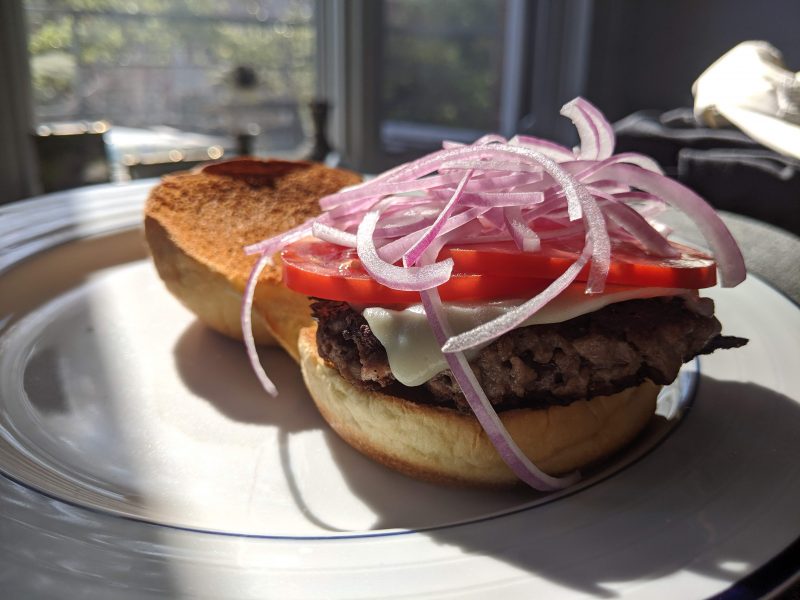
There are some massive upsides to making and eating an Impossible Burger over a beef burger.
For one, after eating several burgers, I didn't feel as if I'd eaten several burgers. It was clear that I'd eaten, but I didn't feel heavy or greasy or gross - I just felt pleasantly full.
For another, searing was even easier with the Impossible Burger than with a beef burger. It sits flatter against the pan, thus more easily pulling an even sear.
Perhaps most importantly, the Impossible Burger gets aggressively crispy, which is truly delightful insofar as it replicates one of the primary functions of a patty in a smashburger.
Let's talk downsides: the smell, the sliminess, and the lack of true beef flavor.

My initial impressions of Impossible Foods' meat were not positive.
When I took it out of the package, it reminded me more of opening a can of dog food (which I, unfortunately, do every day) than opening a butcher's package full of ground beef. There was a surprisingly strong scent, which ground beef usually doesn't have, and a general sliminess to the product. That latter bit was especially bad, because slimy ground beef is usually a good indication that it's gone bad.
About 25 seconds later, after I had more closely sniffed and actually tasted the veggie "beef," things improved considerably. It quickly leapt from alien object to something more familiar: a kind of verisimilitude of beef that my brain accepted as real enough.
My wife wasn't quite as easily sold. The first burger I made in her presence she said smelled like chocolate. By the second burger, her impression of the cooking smell had turned from "like chocolate" to "weird."
Notably, she ate the burger and didn't say it tasted bad - but she did say that "it doesn't taste like a burger."
The biggest downside of all: the premium price.

At most grocery stores, you'll pay anywhere from $3 to $8 for a pound of ground beef.
It's pretty rare to pay the higher end of that spectrum. I had to call the fanciest butcher shop in Brooklyn, The Meat Hook, which prides itself on being a more labor-intensive whole-animal butchery, to find some ground beef that costs $8 a pound.
But Impossible Foods is selling less than a pound of its ground "meat" - 12 ounces - for $9, a pretty stark comparison to the $3 you could pay for more ground beef.
I asked Impossible Foods CEO Pat Brown about the price during an Impossible Foods event in New York City on Thursday. Here's what he had to say:
"We're priced in the range of what I would say is premium ground beef at this point, not the kind of super-mass-market ground beef. And that's because although structurally our economics are vastly better than the animal-based food industry - because we use less than a twenty-fifth of the land, a tenth of the water, less than a twelfth of the fertilizer input, and all the things that are driving expensive meat production - what we lack, that they have, is massive scale. We're scaling up right now from tiny to big, and it's only when we get to a bigger scale when we realize the advantages of our process. And our goal is to get our prices affordable to everybody in the world, not just even in the US but in the developing world, as fast as we possibly can. But it doesn't happen instantly, and we can't sell our products at a loss if we want to stay in business. Fortunately, we have more demand than we can handle at our current price."
In so many words: As Impossible's "meat" becomes more popular, its price should correspondingly decrease as its makers feel more of the financial benefits of the company's more environmentally friendly approach to food creation.
Let's hope that's the case, because $9 for 12 ounces is an awfully high price to pay for a burger.

